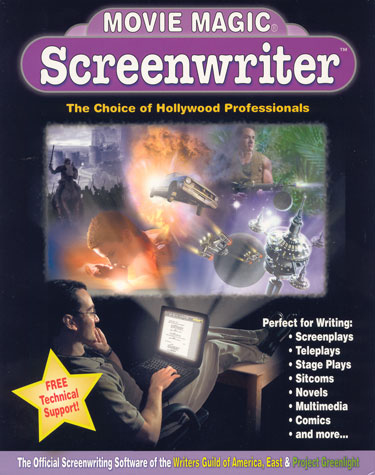Jonathan Hayes (www.jonathanhayes.com) is a senior forensic pathologist in the New York City Medical Examiner’s Office, and author of PRECIOUS BLOOD (Harper 2007) and A HARD DEATH (Harper, 2009). Jonathan is also a special guest speaker for the 2010 Writers Police Academy.
(Warning! Graphic images below)
My life In Blood
I was never squeamish. I remember, as a child, feeling contempt for the delicacy of a family friend who got woozy at the sight of blood (and my delight when she was somehow persuaded to stuff the Christmas turkey, slipped a hand into the body cavity and promptly fainted).
But I wasn’t particularly drawn to the bloody or grotesque, either, so it’s odd to think that I’ve now devoted 20 years of my life to investigating violent death as a forensic pathologist in New York City and Florida.
On my first day at St Thomas’s Medical School in London, we kicked off with dissection; I remember my excitement at the prospect of cutting a real human body. Ultimately, though, it was a bit anticlimactic. They prepare bodies for dissection by embalming them with formaldehyde solution; this stops decay during the 10 weeks or so it takes to formally dissect an arm or a leg. Embalming leaches blood from the body, the formalin stiffening the tissues and fading them dull grey. We dissected with bare hands, the raw smell of formalin searing our nostrils, our fingers slippery with subcutaneous fat. After the first couple of incisions, I knew I’d be OK: the mud grey flesh seemed something other than human; the inert, rubbery tissue something other than real.
It wasn’t until we started surgery that I had my first encounters with real blood. Bright operating theatre lights washed the skin white, blanching the thin ribbon of blood that tracked the scalpel across the skin almost to blue. The wound filled with blood, which was quickly wiped with gauze or staunched by the registrar. Deeper in the body, we exposed larger vessels and saw the subtle pulsing of an intact artery, the thin, rhythmic spurt of something cut. I began in vascular surgery, where there were sometimes geysers of blood; after one long operation, I removed my boots to find each filled with a pint or so of blood clot. I suddenly understood why everyone else had worn their scrub trousers on the outsides of their boots, instead of tucking them in as I had.
After medical school, I moved to the US and trained in pathology. Pathologists make diagnoses by examining specimens taken from patients – a blood smear, for example, or a biopsy of a peculiar mole. I found it incredibly dull, and began to hang out with the medical examiners, who shared our building. Don’t get me wrong: surgical pathology is vitally important, highly skilled work that is intellectually demanding. But with medical examiner cases, to borrow an expression from Damon Runyon, “a story goes with it”. And I loved forensics immediately.
I flew down to Miami, then the best medical examiner’s office in the country, to apply for a training position. The chief, Joe Davis, drove me through the city in his big maroon Cadillac. He was an exceptional tour guide, a connoisseur of the city’s mayhem, quick to point out the site of a decapitation here or a bombing there. We ate lunch in a Cuban restaurant in Little Havana. Dr Davis slid the menu across the glass-topped table to me and uttered some of the truest words I’ve ever heard: “Jonathan, the Cubans have a way with pork…”
That year, in the medical examiner’s autopsy room in Miami, in the city’s homes and streets, its construction sites and strip malls, its vacant lots and canals, I got an education in how we live, as seen through the fish-eye lens of how we die. It was hallucinatory and intense. Catapulted out of the placid gentility of life in Boston, I suddenly found myself squatting over a mangled body, explaining to sweaty cops that the victim had been hacked to death with a machete, not hit by a truck, as they were claiming.
Becoming a forensic pathologist felt like stepping into a role on a TV show. I don’t know whether detectives talk like detectives because that’s how they talk, or because they’ve learnt from TV how detectives talk. Expectations for the role of “forensic pathologist” are not as clearly sketched out; I made it up as I went along. The identity I forged was much influenced by the fact that I was English – immigrants to the US bring an intensely romantic notion of what America is, and I was no exception. I moved to Miami Beach, then still a fairly seedy, gay-leaning Art Deco neighbourhood. I ate Cuban food, and briefly dated a Cuban aerobics instructor. I bought a small black car, and had a ridiculously huge bass speaker installed in the boot (this was, after all, the era of the Miami bass sound).
It was an absurd life. I’d find myself driving home at 4am after examining a body dumped out in the swamps of the Everglades, flashing my badge at the highway toll booth as my tiny car boomed out Maggotron’s “The Bass That Ate Miami”. Then over the causeway, into Miami Beach, where blonde models in bikinis rollerbladed down Ocean Drive in the moonlight and the neon, high on cocaine. Even as I lived it, my life felt unreal.
My work, on the other hand, was all too real. The city had one of the highest homicide rates in the country, as the cocaine wars ended and the crack epidemic began. Cocaine poured into the country through Miami; we saw many cocaine mules, poor South Americans who’d swallow over a hundred packets of cocaine then board a flight to the US, only to die in some downtown fleapit when a packet ruptured inside them. The other factor Miamians blamed for the killings was the Mariel Boatlift, when Fidel Castro opened the jails of his country and encouraged their inhabitants to start a new life in the US. (Brian De Palma’s 1983 film Scarface follows the adventures of the fictional Tony Montana, who became a cocaine dealer in Miami after leaving Cuba on the boat from Mariel harbour).
For someone coming up in the field, it was an amazing experience. I was young then, and the whole thing – crime scenes, murder, the autopsy room, working with the cops, testifying in court – had a delirious sense of Hollywood adventure. I was emotionally detached from the work, which is critical: you can’t let yourself get busted up by every death you investigate. My work felt like watching a film. I think people watch violent movies to see their nightmares play out, and then to walk away from them unscathed. You don’t just watch a slasher film, you survive it.
Forensic pathologists are gate-keepers of death, chronicling the human experience from a highly specialised perspective. For a long time I thought of death as something that happened to other people – it seemed like that should be part of the bargain. When a prominent medical examiner in his fifties was found dead beside his microscope, it seemed wrong to me, like some kind of cosmic misfire. It wasn’t until after 9/11 that I finally realised I’d been mistaken all along – death wasn’t an abstraction, and no one in my line of work gets left unscathed.
But that’s another story. At the start, everything I was doing and seeing fascinated me, and one of the most fascinating discoveries of all was the central role blood played in medicolegal death investigation.
Blood is at the heart of existence. Jewish belief, for example, holds that the soul of an animal resides in its blood, so birds and animals to be consumed by an observant Jew must have their throats cut and their blood drained. I don’t think that belief extends to humans, but as part of honouring the dead, Jewish lore rejects any interference with the body after death. Autopsy is prohibited, as it is by Muslims, Jehovah’s Witnesses, Christian Scientists, the Amish and the Hmong, among other groups.
In New York, when an observant Jew is murdered, we still need to do an autopsy, but we modify our procedure. The body is placed in a body bag, so that all blood and tissue remain together. I’ll usually have a rabbi by my side, blotting up every drop of blood I spill. When I finish, the rabbi gathers all my scalpel blades and the blood-stained paper towels, and puts them into the bag so the body can be buried in as intact a state as possible. Similarly, after a bombing in Israel, you’ll see men in day-glo yellow vests combing through the wreckage, gathering limbs and tissue fragments and wiping up blood; these are the ZAKA, whose mission is to assist in identification and recovery. I’ve heard that when a member of one of New York’s Orthodox Jewish sects (the Satmar and the Lubavitchers) is murdered on the street, their friends descend on the site with pick-axes to collect the blood-stained concrete; I’ve not seen that myself.

In Israel, a ZAKA operative wipes blood after an attack
Blood is every bit as important in many other religions, particularly Christianity. That Christ was killed and died bloodily was critically meaningful to early Christians, both because it proved his suffering and his humanity, and because his blood washed away the sins of man.

A Durer portrait of Christ suffering
Medieval depictions of the death of Christ are often enthusiastically gory, some showing angels gathering with golden chalices to catch the sprays of blood spurting from his wounds; and drinking the blood of Christ in Communion provides an ecstatic bond with God.

A Cranach crucifixion – Christ’s blood anointing the faithful
Spilling one’s own blood remains popular among the faithful; some devout Filipinos have themselves crucified on Good Friday, with real nails driven through their palms, and on the Day of Ashura, some Shia Muslims beat and cut themselves until the blood flows freely (other modern Shia have moved away from the spectacle, channeling their sacrifice instead into blood donation).

A devout Filipino being crucified on Good Friday

Shi’a Muslims marking the Day of Ashura; others sacrifice by donating blood
Animal sacrifice is still surprisingly common in parts of the US, particularly where there’s a strong Latin or Afro-Caribbean community. In Miami, there’s plenty of santeria – Christian symbolism grafted onto pagan spiritualism to create powerful magic; less commonly, we’d see traces of palo mayombe – santeria’s dark twin. While santeros, the priests of santeria, sacrifice chickens, the palero uses human blood and bones for black magic. At some murder scenes (frequently involving drug dealers, who out of personal belief or a desire to intimidate are fond of palo), we’d find an nganga, an iron cauldron packed with rotting blood, bone and other symbolic objects – big iron nails, copper pennies etc, the specific elements indicating the cauldron’s particular spell. In New York, I once examined a bucket containing an enormous donkey penis with fistfuls of maraschino cherries and pennies; I don’t know if it was santeria, palo or just someone freestyling, but it certainly made an impression on the cops.

An nganga, a cauldron filled with mystically significant metal, wood and leather objects, and blood, and, here, a human skull. For practitioners of palo mayombe, the dark form of the syncretic Caribbean religion of santeria, the nganga is the ritual equivalent of an altar.

Technicians clean up an nganga discovered in New York City, ritual markings on the wall. In Miami, when we encountered santeria or brujeria (palo) artefacts, the cops would scoff at them, but most would refuse to touch them.
In the carnage of a violent crime scene, it’s easy to lose sight of just how perfect a fluid blood is. It is more viscous than water; a blood droplet has an invisible skin created by its surface tension, and falls through the air just like a drop of water, which is to say as a perfect sphere – the teardrop shape artists use to depict rain is wrong.
A skilled forensic scientist reads the blood spatter around a murder victim as if the droplets were word bubbles floating above a comic strip head. Shape and size are critical: blood falling vertically onto a smooth surface leaves a circular dot, but with uneven surfaces, the shape is a sunburst, little spikes of blood splashing away from the centre. If the bleeding person is running, the bloodstains have an elongated shape, like teardrops pointing in the direction of movement. From the drop’s proportions, criminalists can calculate the angle at which it struck; strings or lasers are used to recreate droplet trajectories; and if there are enough drops, the point of origin of the blood spray can be identified.
In practice, you can usually get a rough sense of how the assault unfolded based on quick pattern recognition – the groupings of the droplets, their location, their height above the floor, and so on. Blood from a severed artery creates a distinctive pattern of rivulets on a surface, while pale ghost outlines may reflect someone standing between the victim and the wall, absorbing spatter.
There is, of course, a learning curve. At one of my first murder scenes, the victim, whose throat had been cut, lay stretched in front of the TV. I knelt to examine the body and within seconds my legs were soaked with blood hidden in the dark carpet. I also quickly learnt to look up when entering a bloody death scene. In a stabbing or beating, blood from the weapon can be flicked up onto the ceiling (this is particularly common with hammers, which have considerable angular velocity). Gunshot wounds spray out a superfine mist of blood; if the victim is close enough to the gun, blood can be recovered from the barrel, which makes it extremely useful in this age of DNA. The Holy Grail of crime scene evidence is the killer’s fingerprint in the victim’s blood.
Visually, murder scenes are often extremely dramatic – police always overestimate the amount of blood at a scene because even a small amount (a cupful, say), spilled over bathroom tiles, makes the place look like a slaughterhouse. We learn in childhood to associate bleeding with injury and pain; it’s said that merely looking at the colour red makes the heart beat faster.
Bloody crime scenes play well on the big screen, upping the stakes by underscoring the reality of the violence. In movie and TV murders, I’m usually struck by how “off” the blood is: blood is a dynamic material, changing over time in colour and consistency, from the electric crimson sheen of fresh blood, through glossy purple-maroon clot, to the flaking brown of dried blood. At night, blood looks darker: one of the things I loved about the vampires-in-Alaska movie 30 Days of Night was the oily brown/black colour of the blood at night. On Dexter, a show about a serial killer who’s a police blood spatter analyst, they usually get the colour right, but screw up the spatter patterns.
Criminalists are often derisive about forensics in movies and TV, but I like it. Shows like CSI Miami aren’t meant to be forensic science: they’re forensic science fiction, distilling the coolest parts of criminalistics to their coolest essence. That said, I like crime fiction to be accurate; after you’ve seen a killer’s pathetic attempt to write in his victim’s blood at a crime scene, you just can’t accept a book where the psycho covers the walls with vast screeds in blood. In my own novels, first in Precious Blood and now in A Hard Death, I write about extreme events, but always ground them in real forensic science; I need to believe the stories, my own included.
This has led to peculiar situations. I had to convince my editor that it can take a long time to kill someone with a knife – humans are surprisingly unfragile. In one serial killer case in which I was involved, the murderer used to leave after strangling his victims until they stopped moving. Movie and TV strangulations last just a few seconds, but in real life a fatal strangulation takes a long time: with my case, the killer was caught when two of his victims regained consciousness after he’d left, and described him to the cops. No matter how it looks in the movies, strangling people is hard work.
We give supernatural films free rein with realism. I like vampire movies because they conflate notions of blood and sex – vampires are dead, but are animated by drinking the blood of the living (at one time exclusively the blood of virgins, but as with many religious traditions, prey criteria have relaxed considerably). Vampire feeding is pure sexual metaphor: it’s all about the penetration. In True Blood, there’s no pretence at separating vampires and sex: we want them to get naked and shag, we want them to get naked and drink blood. And they oblige with abandon – True Blood is refreshing in part because it revels openly in its sex and blood, spraying it all over the place with orgasmic glee. (Last year I had dinner with Charlaine Harris, who wrote the Sookie Stackhouse books on which HBO’s True Blood is based; a lovely Southern lady, Charlaine seems both a little shocked and quite delighted with the way Alan Ball, the series creator, infuses explicit sex into her work.)
The first Twilight movie saw the vampire not just neutered, but sitting in the corner cordoned off behind plastic safety cones. With the pallor and smouldering glances of a Twenties matinée idol, Edward Cullen is the ultimate adolescent romantic hero: soulful, tortured and chaste. No wonder he’s tortured. His relationship with Bella must never be consummated: she must not touch him, and he must not drink her blood, or he will lose control. The relationship is all about satisfaction infinitely delayed, a teenage liebestod to a girly indie rock soundtrack. And just as there’s no sex in Twilight, there’s almost no blood: Edward keeps his fangs in his mouth, and his tadger firmly in his pants. The highlight comes when he finally reveals his true form to Bella; he is golden and glittering, with the appearance, and sexual threat, of a My Little Pony.
This doesn’t mean I won’t be seeing Twilight: New Moon. I’m a sucker for doomed romance. Besides, I gather that in New Moon, the focus shifts to werewolves; you’d think that with werewolves (the cognitive opposite of vampires – no broody struggle against one’s killer instinct, just pure unleashed primal urge), there’d be a lot more blood. But then, as I said, I’ve never been squeamish.
* * *
Writers’ Police Academy
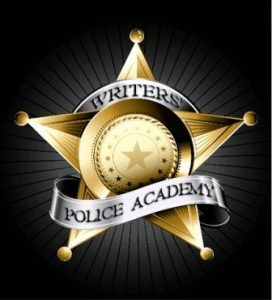
Jonathan Hayes is a special guest speaker for the Writers’ Police Academy.
Registration is open and I’m pleased with the number of people who’re taking advantage of the low early registration rate. Please, please, please book your hotel room early. Space is limited. The hotel will not bill your card until check in.









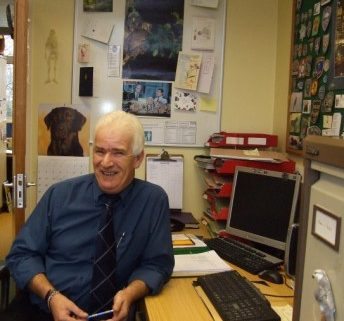
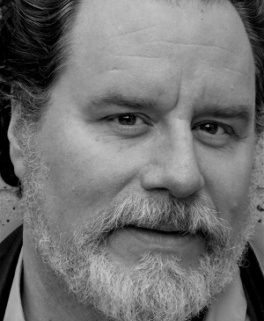








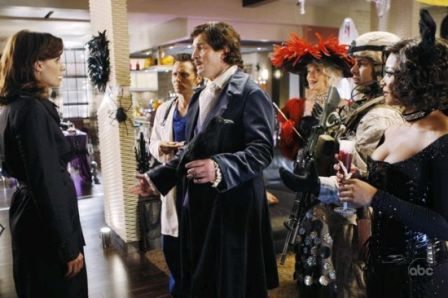

.jpg/250px-Shoeprint(forensic).jpg)








